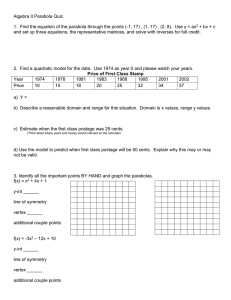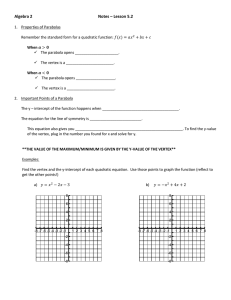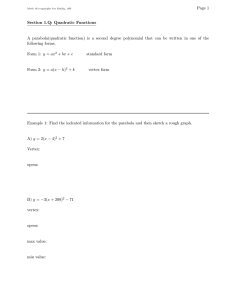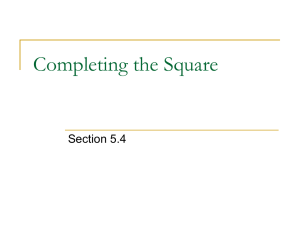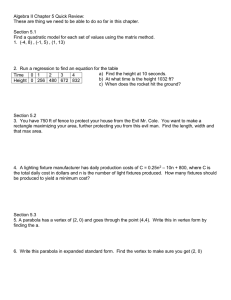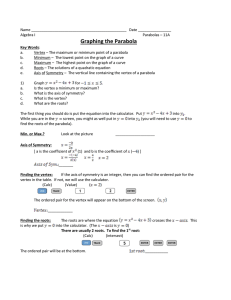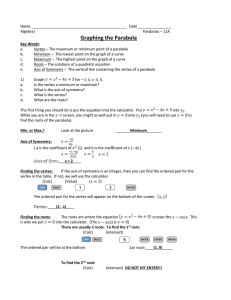Math 112 Section 2.4: Graphs of...
advertisement
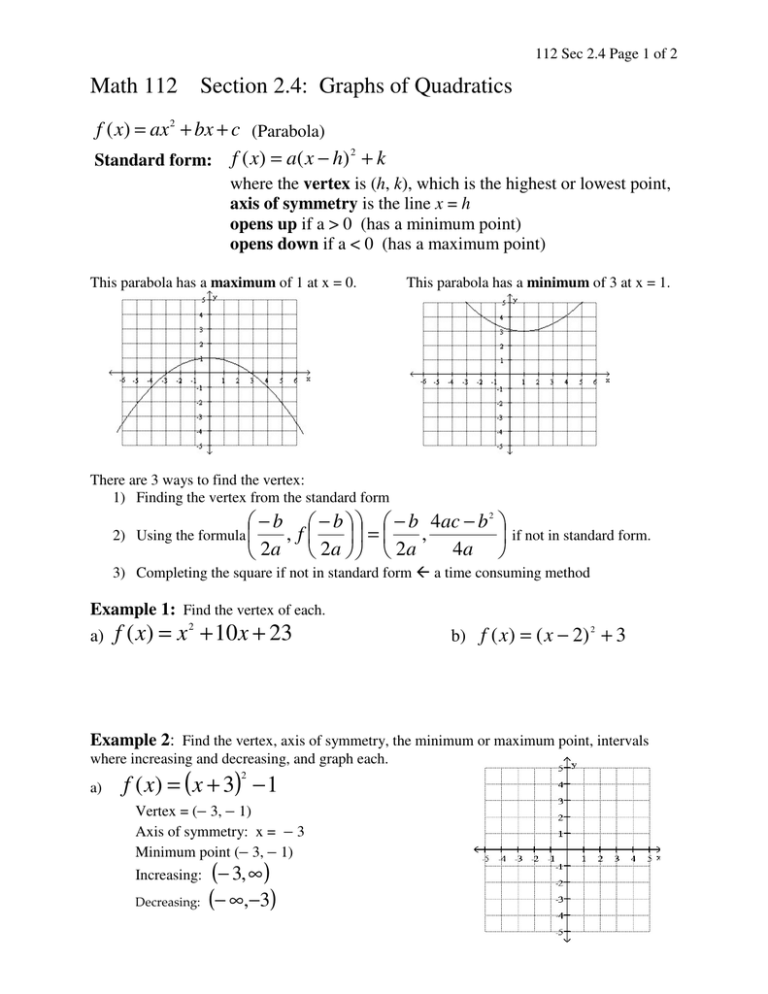
112 Sec 2.4 Page 1 of 2 Math 112 Section 2.4: Graphs of Quadratics f ( x) = ax 2 + bx + c (Parabola) 2 Standard form: f ( x) = a( x − h) + k where the vertex is (h, k), which is the highest or lowest point, axis of symmetry is the line x = h opens up if a > 0 (has a minimum point) opens down if a < 0 (has a maximum point) This parabola has a maximum of 1 at x = 0. This parabola has a minimum of 3 at x = 1. There are 3 ways to find the vertex: 1) Finding the vertex from the standard form 2) −b Using the formula , 2 a 2 − b − b 4ac − b f , if not in standard form. = 2 a 2 a 4 a 3) Completing the square if not in standard form a time consuming method Example 1: Find the vertex of each. a) f ( x) = x 2 + 10x + 23 2 b) f ( x) = ( x − 2) + 3 Example 2: Find the vertex, axis of symmetry, the minimum or maximum point, intervals where increasing and decreasing, and graph each. 2 a) f ( x) = ( x + 3) − 1 Vertex = (– 3, – 1) Axis of symmetry: x = – 3 Minimum point (– 3, – 1) Increasing: Decreasing: (− 3, ∞ ) (− ∞,−3) 112 Sec 2.4 Page 2 of 2 b) f ( x) = −2 x 2 + 8x − 6 Applications: Example 3: Profit Total Profit = Total Revenue – Total Cost P(x) = R(x) – C(x) Find the maximum profit and the number of units that must be sold in order to yield the maximum profit for R(x) = 20x – 0.1x2 and C(x) = 4x + 2. Solution: P(x) = R(x) – C(x) = (20x – 0.1 x2 ) – (4x + 2) = – 0.1 x2 + 16x – 2. − 16 − 16 = (80, P(80) ) , P The vertex = 2(−0.1) 2(−0.1) = (80,−.01 ⋅ 80 2 + 16 ⋅ 80 − 2) = (80, 638) Thus, the number of units that must be sold is 80, and the maximum profit is $638. Example 4: Height of a stone A stone is thrown directly upward from a height of 30 ft with an initial velocity of 60 ft/sec. The height of the stone t seconds after it has been thrown is given by the function s (t ) = −16t 2 + 60t + 30 . Determine the time at which the stone reaches its maximum height and find the maximum height.



